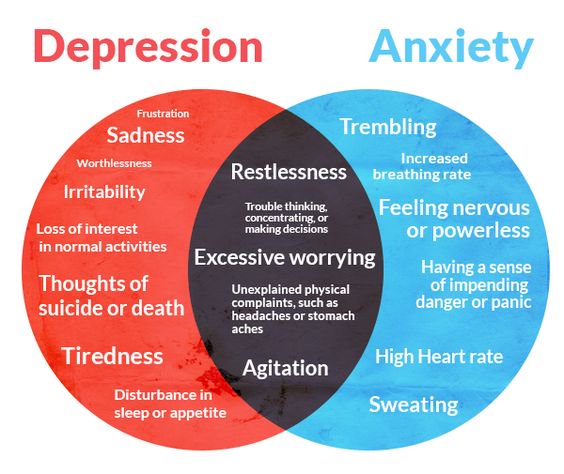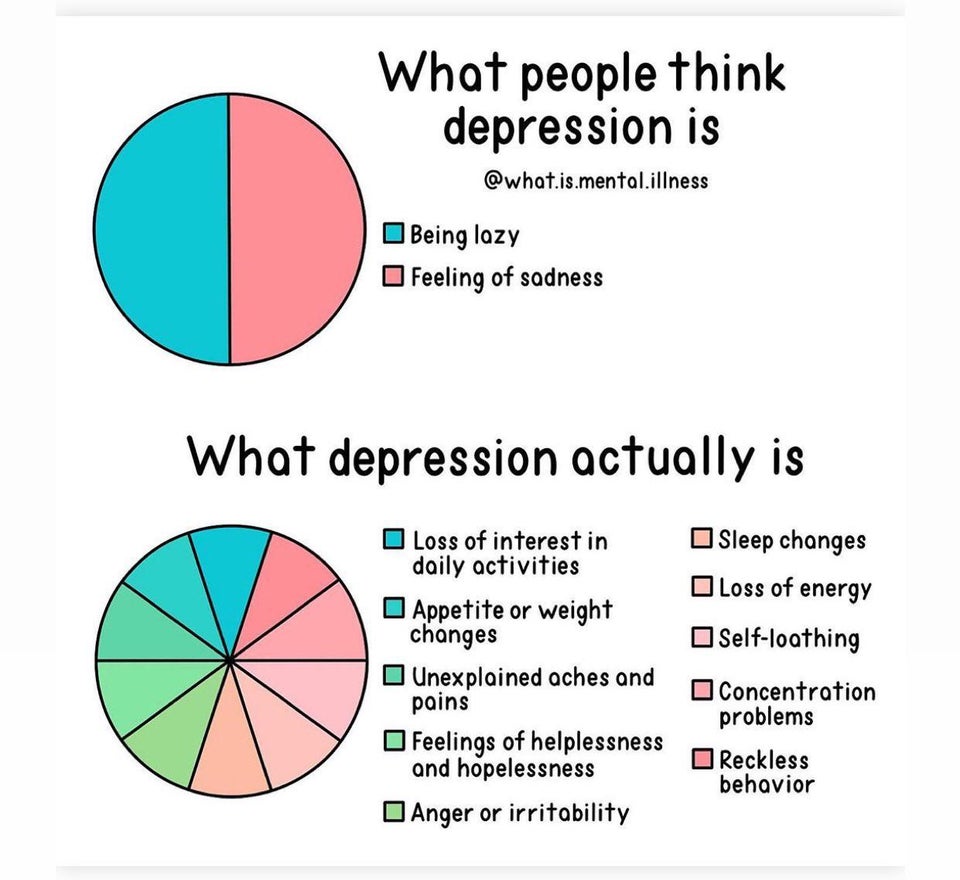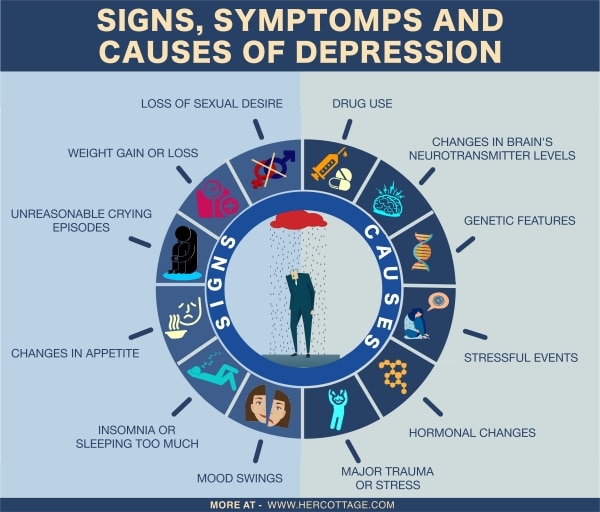Icipants And Demographics Characteristics
A total of 1,154 responded the questionnaire, among them 69.84% were women. Mean age of the participants was 31.15 ± 9.68 and mean BMI was 25.32 ± 5.05. The majority of the participants were single . Only 193 interviewees reported pre-existing diseases, including: cancer , diabetes mellitus , respiratory diseases , and arterial hypertension .
When asked about PE practice before and during the COVID-19 outbreak, 278 women and 72 men reported not practicing any type of PE before social isolation . During the isolation period the number of participants who stated no PE practicewere 434 women and 191 men representing 54.16% of the total. The other data are presented in Table 1.
Table 1. Characteristics of the participants.
Ssris And The Elderly
That said, SSRIs are generally considered to be safe and effective for treating depression and anxiety in older adults. This class of medication works by increasing levels of serotonin in the brain, which can help to improve mood and alleviate symptoms of anxiety. If you are considering taking an SSRI, it is important to speak with your doctor about any potential risks and benefits.
Anxiety Disorders Affect People In Different Ways Learn About The Different Levels Of Anxiety Including Symptoms And Severity Of Impairment
Everyone has feelings of anxiety at some point in their lives, and a certain amount of anxiety is normal. Anxiety disorders, however, are defined by excessive worry and hyperarousal that are disruptive to normal functioning. Anxiety is one of the most common mental disorders, with 19.1% of adults in the U.S. being affected in the past year. Anxiety can begin early in life, with an average age of onset of 11 years old, and it may range from mildly uncomfortable symptoms to severe and debilitating panic that can interfere with a persons ability to live normally.
Levels of anxiety can be influenced by personality, coping strategies, life experiences, and gender. Anxiety levels are typically classified by the level of distress and impairment experienced into four categories: mild anxiety, moderate anxiety, severe anxiety and panic level anxiety.
Also Check: How To Deal With Depression Alone
Data Collection Tool And Technique
Data were collected using Google Forms. A self-reporting questionnaire was distributed among participants through WhatsApp. The questionnaire was divided into two parts. The first part consisted of basic sociodemographic details of the participants including name, age, sex, marital status, and designation. In the second part, we asked questionnaire based on Patient Health Questionnaire and Hamilton Anxiety Scale for anxiety.
All health-care workers who were willing to participate in the study those HCWs posted in COVID ward or COVID ICU were included in the study, while participants who have not given informed consent, participants with physical illness, and participants with psychiatric illness were excluded from the study.
Participants were given the link of Google Forms via Whatsapp, E-mail, and other social media by the group of investigators. Once the link clicked, participants were briefed about the nature and purpose of the study. Phone numbers of primary investigators were provided so that they could ask any doubts and asked for consent to participate in the survey. Those who had given consent were directed to the questionnaires assessing the above-mentioned factors otherwise, they were straight-away directed to the submission page. Data were recorded in a semi-structured pro forma on the basis of findings of the Hamilton Anxiety Rating Scale for anxiety level and PHQ for depression.
What Strategies Are Often Used In Treating This Dual Diagnosis

Evidence-based research suggests that both anxiety and depression be treated at the same time.
Effective strategies often used in treating these co-occurring conditions include:
- Cognitive Behavioral Therapy CBT is often used to treat people with both disorders. Fears, anxieties and tendencies toward depression are managed by seeking out their root causes. Once uncovered, patients learn how to take control of their emotions and life.
- Antidepressant medications Often combined with CBT, these may be prescribed in treating both disorders. Selective serotonin reuptake inhibitors are new antidepressant drugs that produce fewer side effects than their predecessors.
- Exercise This can be very helpful for both disorders. Physical activity causes feel-good chemicals to be released in the body. This aids in relaxation and feeling of well-being.
- Relaxation techniques This typically involves meditation or mindfulness. These techniques can often help to remedy both disorders and improve quality of life.2
Don’t Miss: How To Get Rid Of Depression Naturally
Associations And Influence Of Physical Exercise During Quarantine On Anxiety Depression And Stress
Table 4 shows the comparison of the general scores of anxiety, depression, and stress among the interviewees according to PE practice during the period of social isolation. Individuals who performed PE had lower levels of anxiety, stress, and depression when compared to individuals who were not performing PE during the COVID-19 outbreak.
Table 4. Comparison of anxiety, depression, and stress levels in respondents who do or do not physical exercises during quarantine by COVID-19.
Table 5 shows the association between psychological symptoms and PE practice, adjusted for age, in the total population, between women and men. The risk of having increased anxiety were 118% higher , the risk of depression was 152% higher and the risk of stress symptoms increased 75.1% in the participants who did not perform PE when compared to those who maintain regular PE. Among women, the chance of showing symptoms of anxiety and depression was more than two times greater for those did no perform PE. Absence of PE was related to 60% higher risk of having elevated stress levels . In men, there was a greater risk of having higher levels of anxiety, depression, and stress in those who did not perform PE.
Table 5. Association between physical exercise and mental health status measured by DASS-21, adjusted for age and stratified for sex.
Causes Of Anxiety Disorder
Some causes of anxiety disorders are:
- Genetics. Anxiety disorders can run in families.
- Brain chemistry. Some research suggests anxiety disorders may be linked to faulty circuits in the brain that control fear and emotions.
- Environmental stress. This refers to stressful events you have seen or lived through. Life events often linked to anxiety disorders include childhood abuse and neglect, a death of a loved one, or being attacked or seeing violence.
- Drug withdrawal or misuse. Certain drugs may be used to hide or decrease certain anxiety symptoms. Anxiety disorder often goes hand in hand with alcohol and substance use.
- Medical conditions. Some heart, lung, and thyroid conditions can cause symptoms similar to anxiety disorders or make anxiety symptoms worse. Itâs important to get a full physical exam to rule out other medical conditions when talking to your doctor about anxiety.
Read Also: Alternative Therapies For Anxiety And Depression
Depression And Its Symptoms
Depression, also called clinical depression or major depressive disorder, leads to various problems. These problems can be emotional, physical or social. A few risk factors include a family history of depression, stress, trauma and other diseases.
Some people with severe depression might even have suicidal thoughts. Therefore, consulting a medical professional is the best way to deal with depression. As per research, the symptoms of depression include the following.
- Feelings of hopelessness, helplessness and sadness
- Sleep disturbances like insomnia or sleeping too much
- Loss of interest in pleasurable activities
- Feeling tired or lack of energy
- Reduced appetite or overeating, which leads to weight fluctuations
- Feelings of worthlessness or guilt
- Anxiety and frustration
- Unexplained symptoms like headaches or body pain
Glucose Levels Diabetes And Depression
Depression might be more commonly present among people with constantly high glucose levels and people with diabetes. It is difficult to prove that diabetes causes depression, but this connection is still worth exploring. Diabetes and depression are major health problems that affect several adults.
One study found that in people with type 1 diabetes, the rate of depression is three times higher than in people without diabetes. However, in people with type 2 diabetes, the rate of depression is two times higher. One reason could be that type 1 diabetes is more severe and requires taking synthetic insulin every day.
A study found that depression in diabetic people prevents them from taking their medications regularly . Studies also indicate that the quality of life in people with diabetes and depression may be low. In another study, death rates were also higher in people with depression and diabetes. Researchers have also found that having depression increases the risk of type 2 diabetes by 60%.
When you combine and assess all these factors, you will understand that they lead to a poor prognosis. Prognosis refers to how a disease/disorder will progress in the future. It can be a good or guarded/poor prognosis.
You May Like: Can I Go To A Walk In Clinic For Depression
Related: The Ama Needs To Declare A National Mental Health Emergency
Local increases were highest in places hardest hit by Covid-19, correlating most strongly with high average daily case rates of the virus and with limited ability to move or travel for residents. But the analysis was limited by the data available, which came mostly from high-income Western countries and excluded lower-income countries whose populations were likely affected in greater numbers.
No estimate is often interpreted as if there is no change, which we dont believe at all, said lead author Damian Santomauro, also of the Queensland Center for Mental Health Research. They estimated changes in countries with limited or no data, but hope to have more accurate numbers in a forthcoming analysis of 2021 data. They are also hoping to identify more contributing factors to the trends, including the economic strain many people were under after losing jobs.
Even before the pandemic, depression and anxiety were widespread, making the top 25 causes of disease burden in 2019 according to the annual Global Burden of Disease Study, to which both Santomauro and Ferrari have contributed. As Covid-19 continues to spread, they predict another increase in depression and anxiety could follow, particularly in countries like India, where the first major Covid-19 surge didnt occur until early in 2021.
Anxiety Depression And Stress Levels
Women presented higher levels of anxiety, depressoin, and stress when compared to men . It was observed that 374 women and 100 men had mild to extremely severe anxiety levels. In the depression domain, 487 women , and 142 men showed mild to extremely severe levels. Regarding stress, 417 women , and 110 men presented levels from mild to extremely severe. The frequency per domain is shown in Table 3.
Table 3. Number of participants showing psychological symptoms during quarantine by COVID-19, stratified by sex, using DASS-21.
Don’t Miss: Advice To Give Someone With Depression
Best Ssri For Depression And Anxiety
SSRIs are a type of antidepressant medication that are commonly used to treat conditions like depression and anxiety. They work by increasing levels of serotonin in the brain, which can help to improve mood and alleviate symptoms. SSRIs are generally considered to be safe and effective, but they can cause some side effects, like headache, nausea, and sexual problems.
Connectedness & Health: The Science Of Social Connection

May 8, 2014
May 8, 2014 | Uncategorized | No Comments
Social connection improves physical health and mental and emotional well-being.
We all think we know how to take good are of ourselves: eat your veggies, work out and try to get enough sleep. But how many of us know that social connection is just as critical?
One landmark study showed that lack of social connection is a greater detriment to health than obesity, smoking and high blood pressure.
On the other hand, strong social connection:
leads to a 50% increased chance of longevity strengthens your immune system helps you recover from disease faster may even lengthen your life!
People who feel more connected to others have lower levels of anxiety and depression. Moreover, studies show they also have higher self-esteem, greater empathy for others, are more trusting and cooperative and, as a consequence, others are more open to trusting and cooperating with them. In other words, social connectedness generates a positive feedback loop of social, emotional and physical well-being.
Unfotunately, the opposite is also true for those who lack social connectedness. Low levels of social connection are associated with declines in physical and psychological health as well as a higher likelihood for antisocial behavior that leads to further isolation.
Feel lonely?
Feel like you may be low on social connection?
Learn more in my infographic below!
Watch my TEDx talk to get all the details on the science.
Read Also: How To Convince Someone With Depression To Get Help
National And State Trends In Anxiety And Depression Severity Scores Among Adults During The Covid
Weekly / October 8, 2021 / 70 1427â1432
On October 5, 2021, this report was posted online as an MMWR Early Release.
Haomiao Jia, PhD1 Rebecca J. Guerin, PhD2 John P. Barile, PhD3 Andrea H. Okun, DrPH2 Lela McKnight-Eily, PhD4 Stephen J. Blumberg, PhD5 Rashid Njai, PhD6,7 William W. Thompson, PhD7,8
Glucose Levels And Brain Health
Human brains require a large amount of glucose constantly to function. Research suggests that the brain consumes about 20% of the bodys energy produced from glucose. The brains primary fuel is glucose, which helps maintain cells and produce neurotransmitters. In the brain, the regions responsible for cell death require glucose. Therefore, a disbalance in glucose levels can cause brain diseases, like the early symptoms of Alzheimers disease.
Read Also: Depressed And No One Cares
Spend Time With Your Pet
Having a pet may help reduce stress and improve your mood.
When you cuddle or touch your pet, your body releases oxytocin a hormone thats linked to positive mood .
Plus, studies show that pet owners especially those who have dogs tend to have greater life satisfaction, better self-esteem, reduced levels of loneliness and anxiety, and more positive moods .
Having a pet may also help relieve stress by giving you purpose, keeping you active, and providing companionship.
Summary
Although stress is an unavoidable part of life, being chronically stressed takes a toll on your physical and mental health.
Fortunately, several evidence-based strategies can help you reduce stress and improve your overall psychological well-being.
Exercise, mindfulness, spending time with a pet, minimizing screen time, and getting outside more often are all effective methods.
How Does Mental Health Compare To Beforecovid
Since the Household Pulse Survey began at the start of the pandemic, there is no directly comparable data from before. But the Substance Abuse and Mental Health Services Administration runs an annual survey that collects similar mental health information and predicts the prevalence of mental health conditions using a statistical model. While the Pulse survey concerns depression and generalized anxiety, SAMHSA also includes phobias, psychotic symptoms, anorexia, and bulimia, as well as obsessive-compulsive, post-traumatic stress, adjustment, bipolar, and panic disorders.
About 21% of American adults faced any mental illness issues in 2019, according to SAMHSA data. That is over nine percentage points lower than the prevalence of anxiety and depression alone in the most recent Pulse survey. SAMHSA reports that 8% of Americans experienced a major depressive episode in 2019, compared to 22% of people exhibiting symptoms associated with major depressive disorder in the May 2021 Pulse surveys.
SAMHSA estimates of Americans with mental illness were trending upward before the pandemic, from 18% in 2008 to 21% in 2019. Young people had the largest percentage point increase, with the rate among Americans 18 to 25 rising from 19% to 29%.
Recommended Reading: How To Deal With Depression And Lack Of Motivation
Managing Symptoms: Staying Healthy
Being healthy is important for all children, and can be especially important for children with depression or anxiety. In addition to getting the right treatment, leading a healthy lifestyle can play a role in managing symptoms of depression or anxiety. Here are some healthy behaviors that may help:
- Having a healthy eating plan centered on fruits, vegetables, whole grains, legumes , lean protein sources, and nuts and seeds
- Participating in physical activity each day based on age
Glucose Levels Diabetes And Anxiety
Researchers found an increased level of anxiety in individuals with diabetes. In generalised anxiety disorder, the person feels anxious constantly and across different situations. According to one study, this disorder was present in 14% of individuals with diabetes.
A study found that individuals with diabetes have a 20% higher prevalence of anxiety than others without diabetes. Individuals aged 18-29 had a higher prevalence.
People with type 1 and type 2 diabetes participated in a study. One-third of them preferred using a psychological counselling service. Men reported more moderate to severe depressive symptoms. Women reported moderate to severe anxiety symptoms. The reasons for this connection are similar to why depression and diabetes occur together. One primary reason is that anxiety activates several body systems. These symptoms also persist if a person is anxious for too long, which decreases the efficiency of these systems.
Recommended Reading: How To Overcome Postpartum Depression
Related: A Startup Delivers Mental Health Care To Those Missed By The Unicorns
Santomauro and Ferrari both hope that governments and policymakers will consider the global increases in depression and anxiety in their policymaking and provide more treatment for those that need it.
Its worse if you dont deal with peoples mental health issues as they arise, Ferrari said. We just need that dialogue going, and we hope that this paper can help generate that.
Risk Of Contamination And Preventive Measures

A considerable percentage of the participants reported having some fear of contamination by COVID-19. Table 2 presents the measures taken by the participants, all reported taking at least two of the measures mentioned.
Table 2. Percepction of contamination risk and preventive measures taken by respondents.
Recommended Reading: What Do Doctors Do For Depression